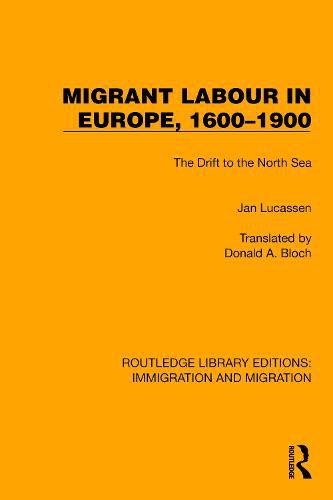Readings Newsletter
Become a Readings Member to make your shopping experience even easier.
Sign in or sign up for free!
You’re not far away from qualifying for FREE standard shipping within Australia
You’ve qualified for FREE standard shipping within Australia
The cart is loading…






Migrant Labour in Europe (1987) examines the movement of workers from less prosperous parts of Europe to areas with demand for their services. The author identifies seven major systems of migrant labour: the North Sea System (mainly Westphalian workers heading for the German and Dutch North Sea Coast and Walloon/French workers bound for the Belgian and Zeeland coasts); the area between London and the Humber; the Paris Basin; Provence, Languedoc and Catalonia; Castile; Piedmont; and central Italy with Corsica. A detailed study of the first of these systems, tracing its development and changes, is brought into a synchronic relation with data for the other regions. The evidence shows major waves of immigration in the seventeenth century, and a rapid diminution of migratory labour to the North Sea in the last quarter of the nineteenth century, a time when new ‘pull areas’ were created by the expanding industrial complexes of Germany and labour began to come in from areas outside Europe.
$9.00 standard shipping within Australia
FREE standard shipping within Australia for orders over $100.00
Express & International shipping calculated at checkout
Migrant Labour in Europe (1987) examines the movement of workers from less prosperous parts of Europe to areas with demand for their services. The author identifies seven major systems of migrant labour: the North Sea System (mainly Westphalian workers heading for the German and Dutch North Sea Coast and Walloon/French workers bound for the Belgian and Zeeland coasts); the area between London and the Humber; the Paris Basin; Provence, Languedoc and Catalonia; Castile; Piedmont; and central Italy with Corsica. A detailed study of the first of these systems, tracing its development and changes, is brought into a synchronic relation with data for the other regions. The evidence shows major waves of immigration in the seventeenth century, and a rapid diminution of migratory labour to the North Sea in the last quarter of the nineteenth century, a time when new ‘pull areas’ were created by the expanding industrial complexes of Germany and labour began to come in from areas outside Europe.